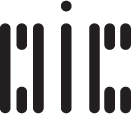The chances for nuclear conflagration seem more serious at this moment in time than perhaps anytime since the first fateful explosion at Hiroshima some 60 years ago. And yet, images of nuclear explosion seem to be lost to public consciousness, largely out of circulation. The problem is in some measure a function of how the original images of nuclear explosion were quickly domesticated as part of a "democratic sublime" that we characterize as a "cold war nuclear optic." This nuclear imaginary has eventually given way to more contemporary instances of "Shock and Awe" animated by what we characterize as a "post-cold war nuclear optic." In this presentation we draw upon the allegorical reading strategy we develop in No Caption Needed: Iconic Photographs, Public Culture, and Liberal Democracy to examine the transformation of the nuclear imaginary as a function of a shifting optical consciousness.
OBSERVATOIRE DE L'IMAGINAIRE CONTEMPORAIN
